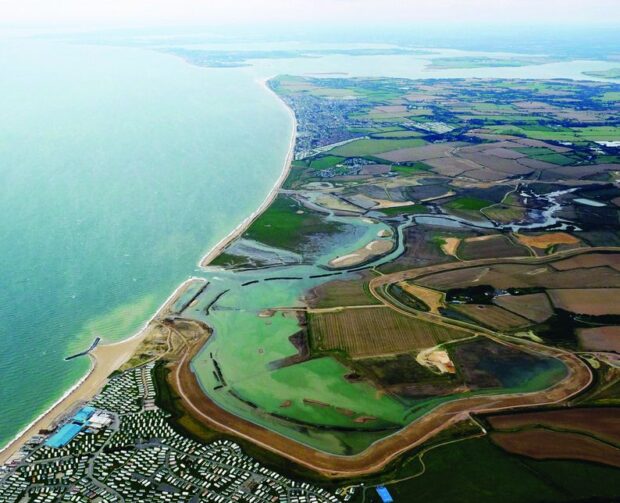Flooding can occur from many different sources. We saw this in winter 2013-2014 when the storm surge caused flooding on the east coast, there was widespread river flooding across many counties, chalk springs started to flow leading to groundwater flooding and in many places surface water flooding was caused by short intense rainstorms that overwhelmed drains and sewers.
There are many ways to reduce the impact of a flood. We can build walls and defences to provide a barrier against flood water; install property-level protection such as flood boards across doorways; maintain the watercourse channel differently; deploy temporary barriers; provide flood warnings and develop flood plans. Alongside these traditional forms of flood risk management we are starting to see greater use of natural processes to reduce flooding.

Working with natural processes involves restoring catchments, rivers, floodplain and coasts to their natural functions. On the coast, this might mean moving the defences inland and creating a new salt marsh on the seaward side. This marshland should absorb wave energy and reduce the amount of water that could overtop the defences. It can also provide a rich habitat for wildlife. The Steart & Medmerry managed realignment schemes are brilliant examples of this. On rivers it can include restoring rivers and floodplains, creating wetlands, capturing runoff in the uplands (see Holnicote and Moors for the future) and in low-lying ponds (see Belford) and planting trees (see Pickering and Stroud). All of these measures promote infiltration, help store water and slow down the rate at which it enters river systems.

Engineering with nature can help to reduce flooding. It can also provide other benefits to people and the environment such as improving water quality, creating new recreation opportunities and helping make space for water. This in turn makes our rivers and coasts more resilient and able to adapt to climate change.
One big challenge for us if we are to work more with nature is how we demonstrate the flood risk benefits of these measures. We like to be able to show with confidence how our schemes function to reduce the risk of flooding to people and property. However, these sorts of measures can be hard to model, also how they will perform in a flood can be uncertain and hard to predict.
A recent Ciria report identified that land management measures (such as ponds and runoff control measures) are only effective at reducing flood risk in small floods in small catchments. This shouldn't be interpreted that working with natural processes is not worthwhile. In fact, this evidence
shows that relatively simple and cheap measures can help reduce flood risk in small catchments.
The Ciria report also only refers to a small suite of working with natural processes measures (mainly land management measures). So the outcomes of this report cannot be applied carte blanche to all working with natural processes measures. There are other techniques which are effective at reducing flood risk in larger catchments and on the coast.
To help bust these myths we are planning some research projects which will develop a working with natural processes evidence directory and a suite of tools to help us identify potential measures which could be used to help reduce flood risk.
Working with natural processes will not resolve all of our flooding problems. However, in some places, they may be the only viable means of managing risk. In other locations, such as Lustrum Beck, they can be used to compliment rather than replace traditional flood risk schemes, helping bolster the performance of our flood defences.
If you’re worried about the risk of flooding to you or a vulnerable person check your flood risk and other information here: http://ow.ly/SWdMz
Sign up for Flood Warnings here: http://ow.ly/SWdVp
Alternatively you can call Floodline on: 0345 988 1188 or sign up for Facebook Flood alerts at: http://ow.ly/SWdVp

2 comments
Comment by Bruce posted on
Look at system of johads, small check dams and local management of watershed used in arid India by for example https://en.m.wikipedia.org/wiki/Tarun_Bharat_Sangh or flow partnerships
http://www.theflowpartnership.org/#introduction
Whilst not 'nature', still cost effective and 'do-able'
Comment by V. Graham posted on
Is that window in Cockermouth, if so, I'm afraid the flood defense didn't work & we are having to put better ones in!